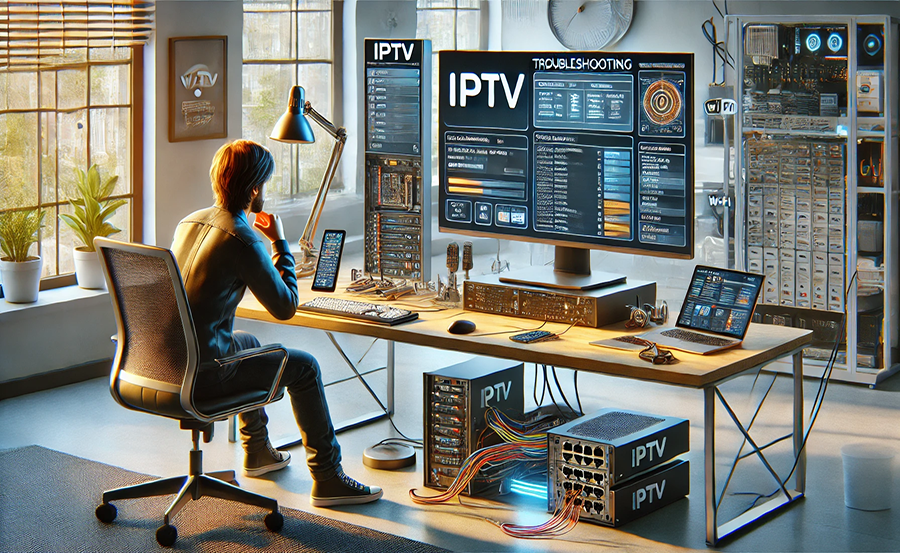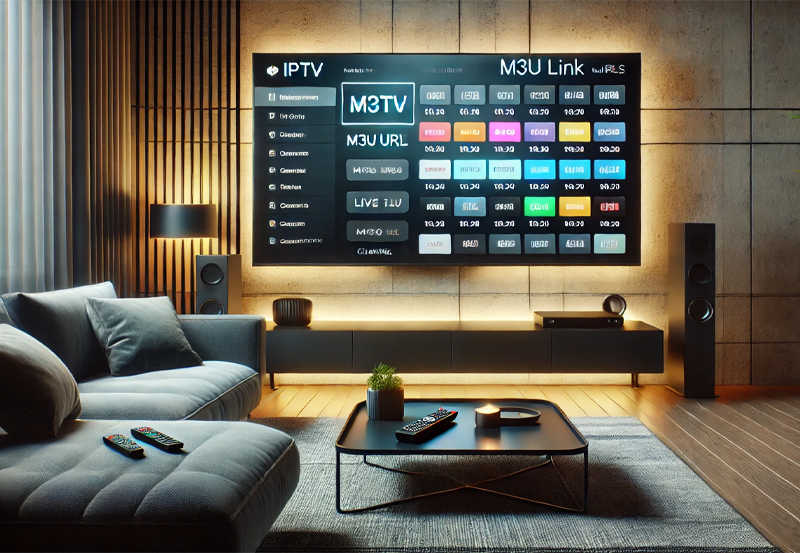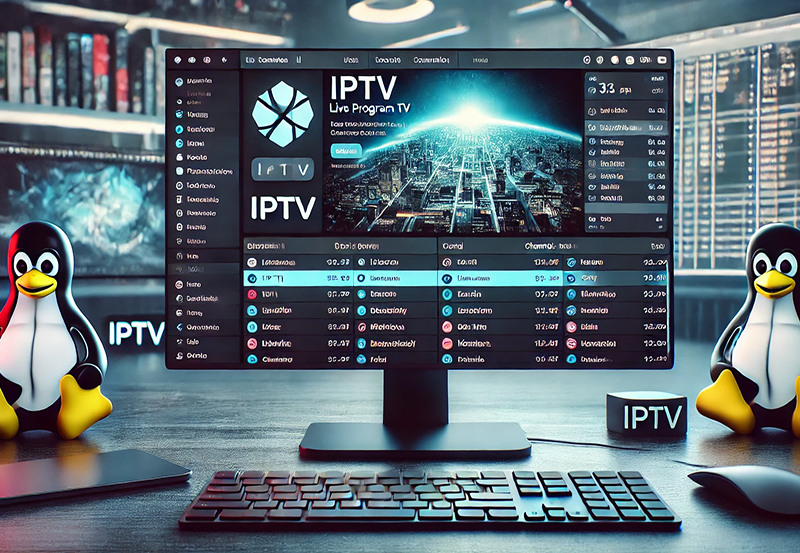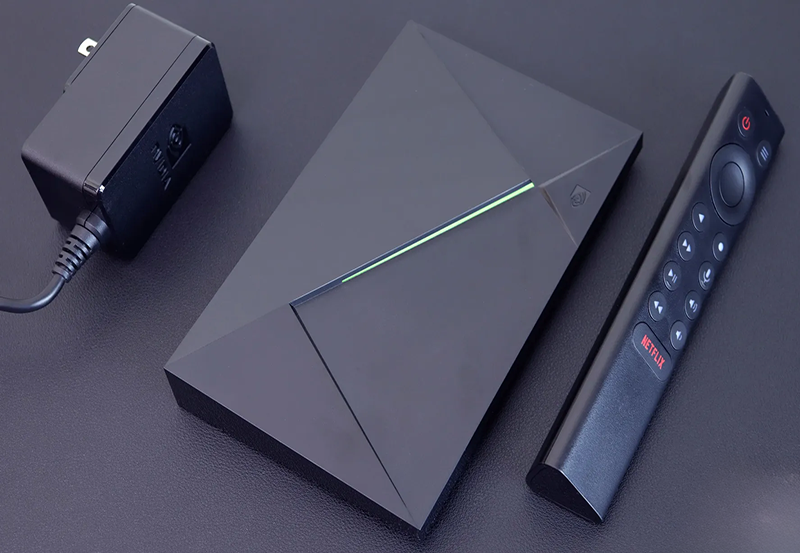When it comes to combining VPNs with IPTV for seamless live TV streaming, Windows users might find themselves at a fascinating crossroad. This isn’t just about plugging and banging—a VPN adds an extra layer of resilience to your streaming experience. While it promises privacy, security, and sometimes even enhanced access to geo-restricted content, its integration with IPTV can introduce unexpected complexities. Keep in mind that understanding the core functions of both technologies is essential before diving into troubleshooting.
Most users opt for VPN services to circumvent regional restrictions, maintain some level of anonymity while streaming, and to ensure a layer of encryption when accessing IPTV on Roku or any other platforms. The ease of access to worldwide IPTV channels, thanks to VPN, makes it a coveted tool among streaming enthusiasts. However, this excitement can quickly lead to frustration when things don’t go as planned.
Common VPN Issues Faced by IPTV Users on Windows
Connection Drops
Connection stability can be elusive, especially when multiple protocols are involved in the streaming process. Users often report sudden disconnections while watching their favorite channels, which can be attributed to several factors. Start by verifying the VPN server’s reliability and your internet stability.
Smart Insight:
Enjoy premium American channels with USA IPTV, perfect for TV shows, movies, and live sports.
Another common cause is the VPN settings themselves. Perhaps there’s a random timeout or a server overload during peak hours. It’s worth having more than one server as a backup plan for when your default server begins to falter.
Slow Streaming Speeds
Imagine savoring a pivotal moment in a game, only for the stream to buffer indefinitely. Slow speeds while using a VPN can be exasperating, but there’s typically a reason behind it. It could be the VPN protocol in use—some protocols are faster but less secure, and vice-versa.
Check to ensure your VPN’s speed settings aren’t set to automatically select servers based on security protocols rather than speed. Occasionally, opting for nearby servers might improve speeds, or changing from OpenVPN to a lightweight option like WireGuard could be beneficial.
Solutions: How to Fix VPN Issues with IPTV on Windows
Optimizing VPN Settings
When tuning the VPN settings, attention to detail is key. Begin by accessing the control panel of your VPN application. You’ll typically find toggles for various protocols like IKEv2, L2TP, or the aforementioned OpenVPN and WireGuard. Curious users might experiment with these to find the right balance of speed and security for IPTV enjoyment.
Furthermore, activating features such as Split Tunneling might assist. This feature allows users to route only specific applications through the VPN, which could be beneficial for preserving bandwidth for your IPTV activity.
- Use Split Tunneling for selective routing.
- Shift between different protocols like WireGuard for better speed.
- Disable features that might throttle performance, such as encryption on non-critical data.
Physical Network and Device Checks
Should your VPN configuration check out without a hitch, further investigation may be required on the physical front. Start with your internet connection: is your ethernet cable snug and secure? Is your Wi-Fi receiving strong signals?
Your computer’s network settings can also be a factor. Poking around in the network adapter settings to ensure they aren’t interfering with the VPN connection can’t hurt.
Enhancing the IPTV Experience with Expert Advice
Choosing the Right VPN for IPTV Use
A pivotal piece of IPTV enjoyment hinges on selecting the right VPN service. Vet potential VPNs based on server coverage, particularly in countries where desired content is typically geo-blocked. Moreover, streaming-focused VPNs often offer optimized servers dedicated to IPTV usage, ensuring uninterrupted viewing sessions.
Don’t shy away from reviews. Gather insights from other IPTV users about experiences with specific VPNs for an inside look into product efficiency.
Adjusting Streaming Settings for Better Performance
It’s worth considering that the issue might not entirely reside with the VPN. IPTV services themselves offer various settings configurations that may enhance performance. Check if there are quality options within the IPTV settings—lowering the resolution slightly might alleviate buffering without sacrificing too much on the video quality.
Moreover, minimize other background tasks on your Windows machine when streaming to let the IPTV service use maximum resources for optimal performance.
Ensuring Compatibility: IPTV on Devices like Roku
While our main focus remains Windows, understanding how different configurations impact other devices ensures a robust setup is possible across a growing ecosystem. IPTVs might present as simple applications, but compatibility checks can prevent headaches. Using Roku as an example, while VPNs are not directly supported on Roku devices due to operating limitations, installing the VPN on a router or sharing the connection through your Windows PC serves as a viable workaround.
Take advantage of these alternative measures to extend IPTV entertainment across a spectrum of devices, thus ensuring every platform sees an equal share of the latest hits or sports events, live and buffer-free.
Bringing it All Together: Your Checklist for Troubleshooting VPN and IPTV
- Test multiple servers if experiencing lag.
- Configure your VPN settings to prioritize streaming speed.
- Investigate both physical and software components for network inconsistencies.
- Optimize both VPN and IPTV application settings for streamlined operation.
- Expand your knowledge by considering how similar solutions can apply across different devices.
Aligning these elements for a seamless IPTV experience might seem like a maze at first, but with the above strategies, users can easily navigate potential pitfalls. Solutions tailor-made for one environment can often cross-pollinate effectively to others, providing a diverse toolkit adaptable to myriad troubleshooting scenarios.
FAQ: Addressing Common VPN and IPTV Questions

Why does my IPTV buffer while using a VPN?
This is typically due to a combination of server congestion, suboptimal settings, or your base internet speed being too slow to handle the added security layer of a VPN. Adjust your settings or switch servers for a potential fix.
Can I use free VPNs for streaming IPTV?
Free VPNs often come with limitations such as speed restrictions, server unavailability, and data caps, all of which can severely inhibit streaming performance. Premium VPN services are recommended for a reliable IPTV experience.
Why doesn’t Roku work directly with VPN?
Roku OS doesn’t naturally support VPNs due to its operating system restrictions. However, you can use a VPN-enabled router or share a VPN connection through a Windows PC to bypass this limitation.
Will changing my VPN server improve IPTV performance?
Yes, often switching to a less crowded or geographically closer VPN server can enhance streaming speeds, especially if the issue arises from server overloads.
How can I ensure my VPN connection stays stable?
Stability can be bolstered by selecting well-rated VPN providers, using wired over wireless connections, and ensuring no conflicting processes interfere with your network settings.
Is there a specific VPN protocol best for IPTV?
While no single protocol is best for everyone, many users find WireGuard strikes a good balance between speed and security, making it ideal for streaming activities on IPTV.
Can my ISP detect VPN usage on IPTV?
Most ISPs cannot decrypt VPN traffic, although they can detect its presence by observing that the data is encrypted. VPNs that use advanced protocols often blend well, minimizing any soft caps ISPs might apply.
what is VlC player and how can install?





